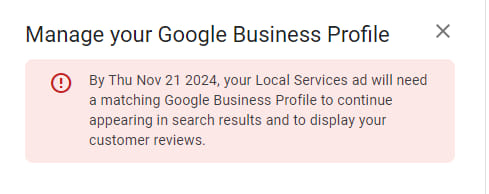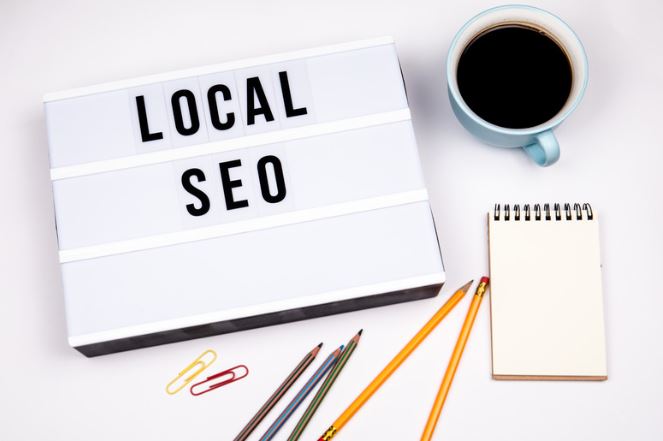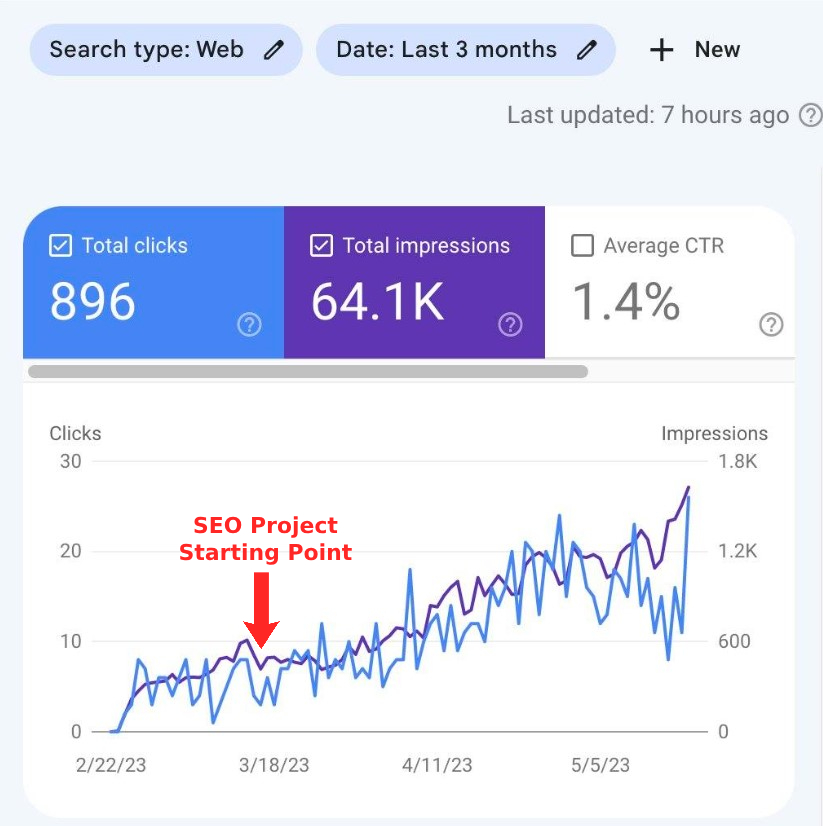
Mastering Integrated Marketing Communication: Boost Your Brand’s Consistency
BlogWhat Is Integrated Marketing Communication (And Why Your Business Needs It) Ever feel like your marketing strategy is a jumbled puzzle where none of the pieces fit? You’re posting on social media, tweaking your website, sending emails, and maybe even running ads—but instead of a symphony, it sounds more like a middle school band rehearsal? (No offense to middle schoolers. We’ve all been there.) That’s where Integrated Marketing Communication (IMC) comes in. Think of IMC as the ultimate playlist curator for your brand’s message. It ensures every channel, from your website to your TikTok videos, sings the same tune. And guess what? We’ve got some strong opinions about how to do this right—especially if you’re a small business in Los Angeles trying to stand out. At Sitelinx Organic SEO Agency, we’ve seen firsthand how blending strategies like Local SEO, WordPress SEO services, and Google Business reviews can transform chaotic marketing into a streamlined powerhouse. Let’s break down what IMC really means, why it’s not just a buzzword, and how you can stop throwing spaghetti at the wall and start cooking a Michelin-star campaign. What Exactly Is Integrated Marketing Communication? IMC is like that friend who remembers everyone’s coffee order. It’s the practice of aligning all your marketing efforts—social media, email, SEO, ads, PR—so they work together seamlessly. Instead of treating each channel as a solo act, IMC makes them backup dancers to your brand’s lead vocals. Here’s the kicker: consistency is key. Your Instagram captions should vibe with your blog posts. Your email subject lines should echo your Google Ads. And your website management? It better not look like it’s stuck in 2012. Why Should You Care About IMC? Let’s get real. If your marketing feels disjointed, your customers notice. Imagine clicking on a Facebook ad for “eco-friendly yoga mats” only to land on a website that screams “discount party supplies.” Confusing, right? IMC fixes that by: Boosting brand recognition (because repetition works, folks). Saving money (no more wasting budget on mismatched campaigns). Improving customer trust (consistency = reliability). And hey, if you’re a small business, IMC levels the playing field. You don’t need a Fortune 500 budget—just smart coordination. That’s where partnering with an SEO agency like Sitelinx helps. We’ve helped LA-based cafes, boutiques, and tech startups nail their messaging without breaking the bank. The Nuts and Bolts of IMC: Breaking It Down 1. Start With a Clear Message (No, “We’re Awesome” Doesn’t Cut It) Your brand’s core message is the foundation. Are you the best SEO company for small businesses? The go-to WordPress SEO services provider? Whatever it is, drill it into every piece of content. Pro Tip: Use tools like customer surveys or social listening to refine your message. (Or hire a marketing consultant—cough we know a great agency in LA cough.) 2. Choose Your Channels Wisely Not every platform deserves your energy. If your audience hangs out on LinkedIn, why waste time mastering TikTok dances? Here’s a quick cheat sheet: Channel Best For Google Business Local SEO & reviews WordPress Blog Long-form content & SEO Email Newsletters Nurturing leads Instagram Stories Behind-the-scenes engagement 3. Sync Your SEO and Content Strategy Technical SEO services might sound boring, but they’re the backbone of visibility. Optimize your site speed, fix broken links, and structure your content for both humans and search engines. Pair this with Local SEO tactics (like optimizing for “best coffee shop in LA”) to attract nearby customers. Fun Fact: We once boosted a client’s organic traffic by 200% just by aligning their blog topics with their Google Business reviews keywords. Magic? Nope—just IMC. 4. Measure, Tweak, Repeat IMC isn’t a “set it and forget it” crockpot recipe. Use analytics to track what’s working. Did that email campaign drive traffic to your site? Did your WordPress SEO services blog post rank for the right keywords? Adjust as you go. Common IMC Mistakes (And How to Avoid Them) We’ve seen it all—businesses that treat their social media manager like a lone wolf, or websites that haven’t been updated since the first iPhone launch. Here’s what not to do: Ignoring Mobile Users: If your site isn’t mobile-friendly, you’re basically telling 60% of visitors to bounce. Siloed Teams: Your SEO specialist and social media manager should be BFFs. Period. Forgetting Local SEO: If you’re a local business, missing out on “near me” searches is like leaving money on the table. FYI: Sitelinx offers website management packages that include technical SEO services, so you can avoid these face-palm moments altogether. “But Do I Really Need an SEO Agency?” Look, we get it. Hiring an SEO company feels like a big step. But here’s the thing: IMC requires expertise. You wouldn’t rewire your house without an electrician, right? (Unless you’re into living by flashlight. No judgment.) The best SEO companies for small business (hey, that’s us!) handle the heavy lifting: Keyword research & content planning On-page and technical SEO services Monitoring Google Business reviews and local rankings Aligning everything with your broader marketing goals Plus, we’ll make sure your WordPress site isn’t secretly sabotaging your efforts. (Spoiler: Outdated plugins are not your friend.) FAQs: Your IMC Questions, Answered Q: How long does it take to see results from IMC? A: SEO and brand building aren’t overnight successes. Give it 3–6 months for traction, but expect gradual improvements sooner. Q: Can I handle IMC myself? A: Sure—if you have 10 hours a week to spare. Most small biz owners don’t. That’s why working with an SEO specialist lets you focus on what you do best. Q: What’s the #1 thing killing IMC efforts? A: Inconsistent messaging. If your website says “affordable” but your ads say “luxury,” customers will peace out faster than you can say “brand voice.” Ready to Ditch the Chaos? Let’s Talk. IMC isn’t just a strategy—it’s a mindset. It’s about weaving your brand’s story into every tweet, email, and Google search. And while it might feel overwhelming, you don’t have to figure it out alone. At Sitelinx Organic SEO

Understanding the Shift: Are GBP Reviews Replacing LSA Reviews?
BlogIs Google Replacing LSA Reviews With GBP Reviews? Let’s Break It Down Hey there, fellow SEO nerds! Have you ever felt like Google changes its rules faster than we can say “algorithm update”? Just when we finally wrap our heads around Local Service Ads (LSAs), rumors start swirling that Google Business Profile (GBP) reviews might be stealing the spotlight. Is this another case of Google shuffling the deck, or is there real substance here? Let’s grab a coffee (or a stress ball) and unpack this together. At Sitelinx Organic SEO Agency in Los Angeles, we’ve been knee-deep in Local SEO for years, helping businesses adapt to these shifts without losing their sanity. Spoiler alert: Whether you’re a bakery, a plumber, or a marketing consultant, GBP reviews are about to become your new best friend. What’s the Deal With LSA vs. GBP Reviews? First off, let’s clarify what we’re talking about. Local Service Ads (LSAs) are those handy “Google Guaranteed” badges you see for service-based businesses like HVAC companies or lawyers. They’re pay-per-lead ads that prioritize businesses with strong reviews and verification. Google Business Profile (GBP) reviews, on the other hand, are the star ratings and customer feedback tied directly to your business listing on Google Maps and Search. So why the buzz about one replacing the other? Well, Google’s been quietly testing ways to unify its platforms, and we’ve noticed a trend: GBP reviews are showing up in more places, even overlapping with traditional LSA territory. For example, some service ads now display GBP reviews alongside (or instead of) LSA-specific ratings. Is Google Actually Phasing Out LSA Reviews? Short answer: Not entirely—yet. But here’s the tea: Google’s doubling down on GBP as its central hub for local business credibility. Think of it like this: GBP is becoming the Swiss Army knife of local visibility, while LSAs are shifting toward a more niche role. Why does this matter? Simplicity: Managing one profile (GBP) is easier than juggling LSA and GBP separately. Trust: Customers recognize and rely on GBP reviews more consistently. SEO Synergy: A robust GBP profile boosts your Local SEO, which LSAs alone can’t match. At Sitelinx, we’ve seen clients who focus on GBP reviews gain better organic rankings and ad performance. It’s like getting a two-for-one deal—without the coupon clipping. The Nitty-Gritty: How GBP Reviews Are Stealing the Show Let’s get tactical. Here’s what’s changing and how to adapt: 1. Google’s Love Affair With Unified Profiles Google’s been merging features from LSAs into GBP, like service areas, booking buttons, and yes—reviews. If your GBP isn’t optimized, you’re basically leaving money on the table. Pro Tip: Update your GBP daily. Add fresh photos, respond to reviews (even the grumpy ones), and use keywords in your business description. Need help? That’s what an SEO company like ours lives for. 2. The SEO Ripple Effect GBP reviews don’t just influence customers—they’re a Local SEO goldmine. Google weighs reviews heavily in local pack rankings. More (positive) reviews = better visibility. Simple math, right? Fun Fact: One client, a dog groomer in LA, saw a 40% traffic boost after we streamlined their GBP and WordPress SEO services. Turns out, puppies and algorithms love consistency. 3. The Slow Fade of LSA-Only Strategies LSAs aren’t dead, but they’re no longer the solo act. Combining LSAs with a rock-solid GBP profile is now the winning playbook. “But Wait—What Should I Actually Do?” Glad you asked! Here’s your action plan: Audit Your GBP Profile Is every field filled out? (Including those pesky service categories?) Do you have at least 20 reviews? (No? Time to kindly ask happy clients for feedback.) Are you using Google Posts? (If not, you’re missing free promo space.) Sync LSA and GBP Efforts Use the same keywords, services, and contact info across both. Redirect LSA review requests to your GBP page. Invest in Technical SEO Services A fast, mobile-friendly site (looking at you, WordPress users) complements your GBP work. Fix crawl errors, optimize metadata, and embrace structured data. FYI: The best SEO companies for small business—like, ahem, Sitelinx—specialize in making this process painless. Just saying. The Bigger Picture: Why This Shift Matters Let’s zoom out. Google’s moves always hint at their endgame. By prioritizing GBP, they’re pushing businesses to: Be more transparent (no more hiding behind ads). Engage authentically (respond to reviews, post updates). Play the long game (SEO over quick fixes). Translation: If you’ve been treating GBP as an afterthought, it’s time for a wake-up call. And hey, if you’re overwhelmed, that’s what SEO specialists are for. Wink. Your Burning Questions, Answered Let’s tackle three common FAQs we hear at Sitelinx: Q: “Is Google deleting LSA reviews?” A: Not exactly—but they’re emphasizing GBP reviews more. Merge your strategies to stay safe. Q: “How do I improve my GBP ranking?” A: Post regularly, gather reviews, and nail your technical SEO services. Oh, and work with an SEO agency that gets it. Q: “Can I ignore LSAs now?” A: Not if you’re in a competitive industry! Use LSAs for instant visibility, but build your GBP for lasting results. Wrapping Up: Don’t Panic—Optimize! So, is Google replacing LSA reviews with GBP? Kinda, sorta, maybe. The real takeaway? GBP is your foundation, and everything else (LSAs, ads, even your WordPress website management) should orbit around it. At Sitelinx Organic SEO Agency, we’ve helped dozens of LA businesses pivot without missing a beat. Whether you need a marketing consultant to strategize or an SEO specialist to handle the dirty work, we’ve got your back. Final thought: Google’s gonna Google. But with a little humor and a lot of grit, we can keep our businesses thriving. Now, go update that GBP profile—or let us do it for you. 😉 Need a hand? Reach out to Sitelinx Organic SEO Agency—we’re here to turn Google’s chaos into your competitive edge. Let’s chat!

Ultimate Guide to Starting a Fencing Company in 2025: Tips & Strategies
How ToHow to Start a Fencing Company (Without Stabbing Yourself in the Foot) So, you’ve decided to start a fencing company. Nice! Whether you’re a seasoned contractor looking to branch out or a DIY warrior ready to turn your backyard hobby into a business, we’re here to help you nail this. Starting a fencing biz isn’t just about swinging hammers and digging post holes—though there’s plenty of that. It’s also about strategy, branding, and not accidentally becoming the neighborhood’s most infamous yard-art installer. Let’s break it down step by step. Step 1: Know Your Market (Or Risk Building Fences to Nowhere) Before you buy a single plank, figure out who needs fences in your area. Spoiler: Everyone thinks they need a fence until they see the quote. Do your homework: Research Like a Detective Local demand: Check zoning laws, neighborhood trends, and seasonal needs (e.g., pool fencing in summer). Competition: How many “Bob’s Fencing & More” ads pop up on Google? What gaps can you fill? Pricing: Charge too much, and you’ll scare folks off. Charge too little, and you’ll work yourself into the ground. Pro tip: Add 15% to your initial estimate—trust us, you’ll need it. Pick Your Fencing Flavor Wood? Vinyl? Chain-link? Or go niche with eco-friendly bamboo (because someone’s gotta cater to the yoga studio crowd). Specializing helps you stand out. For example, we know a contractor in LA who dominates the “luxury privacy fence” market. How? Local SEO, baby. They partnered with Sitelinx Organic SEO Agency to crush local search rankings. FYI, if you’re in LA, these folks are the best SEO company for small businesses. Just saying. Step 2: Legal Stuff (The “Boring but Critical” Section) Let’s rip this Band-Aid off fast: Licenses: Most states require a contractor’s license. Check your local requirements unless you enjoy courtroom drama. Insurance: General liability + workers’ comp. Because “Oops, I smashed your client’s prized gnome” isn’t a viable business model. Business Structure: LLCs are popular for liability protection. Talk to a lawyer—not your cousin who “watched a TikTok about it.” Step 3: Build a Website That Doesn’t Look Like a 2005 Geocities Page Your website is your digital storefront. Make it count. WordPress Is Your Friend (Mostly) We love WordPress for its flexibility. It’s like Legos for websites—easy to customize, even if you’re not a coding wizard. But here’s the kicker: A pretty site means nothing if Google can’t find it. That’s where WordPress SEO services come in. Tools like Yoast SEO help, but partnering with an SEO specialist (like our friends at Sitelinx) ensures your site doesn’t get lost in the internet void. Google Business Profile: Your New Bestie Claim your profile, add photos of your work, and beg—er, politely ask—for Google Business reviews. A 4.8-star rating screams credibility. And if managing this feels overwhelming, Sitelinx Organic SEO Agency offers technical SEO services to keep your profile sharp. Step 4: Market Like You Mean It (Because “Build It and They Will Come” Is a Lie) Time to hustle. Here’s how: Local SEO: The Secret Sauce Optimize your site for phrases like “fencing company in [Your City].” Use location pages, blog about local trends (“Why Phoenix Homeowners Love Iron Fences”), and get listed in directories. Local SEO is how you outrank Bob’s Fencing. Social Media: Show Off Those Fence Selfies Post before/after shots, share client testimonials, and maybe even a blooper reel (because who doesn’t love watching someone trip over a post hole digger?). Use hashtags like #FenceGoals or #NotJustForDogs. Old-School Tricks Still Work Yard signs at job sites. Flyers at hardware stores. Partner with landscapers or pool installers. Step 5: Don’t Ignore the Backend (Unless You Enjoy Chaos) Pricing: Math Is Hard, but Necessary Here’s a quick formula: Material Cost + Labor (pay yourself too!) + 20% Profit Margin = Your Price If math isn’t your thing, hire a marketing consultant to help. Tools of the Trade Post hole diggers (manual or auger). Levels, saws, and a lot of screws. A reliable truck. Pro tip: Avoid the “$500 Craigslist special” unless you enjoy hitchhiking. Step 6: Scale Without Losing Your Mind Hire Help (Or Go Full Zombie Mode) Start with subcontractors, then hire full-time once you’re booked solid. Train them well—your reputation is on the line. Keep Clients Coming Back Follow up post-installation. Offer maintenance packages or discounts for referrals. A simple “How’s your fence holding up?” email works wonders. FAQ: Your Burning Questions, Answered Q: How much does it cost to start a fencing company? A: Roughly $10k–$50k for licenses, insurance, tools, and marketing. Skip the fancy office—start from your garage. Q: Do I need a contractor’s license? A: In most states, yes. Check local laws or risk becoming besties with a judge. Q: How do I compete with established companies? A: Local SEO, niche services, and stellar reviews. Or, team up with the best SEO companies for small business (cough Sitelinx cough) to level the playing field. Final Thought: Fencing Is More Than Posts and Panels Starting a fencing company is equal parts sweat, strategy, and stubbornness. Build a solid foundation, invest in website management and SEO services, and don’t forget to laugh when things go sideways (they will). And hey, if you’re in LA and want to skip the trial-and-error phase, give Sitelinx Organic SEO Agency a shout. They’ll handle the digital heavy lifting so you can focus on what you do best—building fences that make neighbors jealous. 😉 Now go forth and conquer. And maybe buy a better pair of work gloves.

Ultimate Guide to Launching a Successful Remodeling Business in 2025
How ToHow to Start a Remodeling Business (Without Losing Your Mind) So you’ve got a knack for transforming drab spaces into stunning masterpieces? Awesome. But let’s be real—starting a remodeling business isn’t just about swinging a hammer and picking paint swatches. It’s about strategy, hustle, and not accidentally turning someone’s kitchen into a modern art experiment. Been there, right? At Sitelinx Organic SEO Agency in Los Angeles, we’ve helped plenty of contractors like you build thriving businesses. And guess what? The secret sauce isn’t just skill—it’s knowing how to market that skill effectively. Let’s break this down step by step. Step 1: Nail Your Business Plan (Or Regret It Later) Every great remodel starts with a blueprint, and your business is no different. Skipping this step is like trying to install a backsplash without measuring. Spoiler: It won’t end well. What to Include: Services: Will you focus on kitchens, bathrooms, or full-home remodels? Pro tip: Niching down helps you stand out. Budget: Tools, insurance, licenses, and—sigh—taxes. FYI, “winging it” isn’t a financial strategy. Competitor Research: What’s everyone else charging? How are they marketing? (Hint: If their website looks like it’s stuck in 2003, that’s your opportunity.) We once worked with a client who tried to offer “everything.” After three months of chaos, they niched into luxury bathrooms. Now? Their calendar’s booked solid. Step 2: Legal Stuff You Can’t Ignore (Unless You Like Courtrooms) Licenses, insurance, LLC vs. sole proprietorship—thrilling, we know. But here’s the deal: you need this sorted yesterday. The Basics: Licensing: Check your state’s requirements. California? You’ll need a CSLB license. Insurance: General liability, workers’ comp (if hiring), and maybe even a bonding certificate. Business Structure: LLCs protect your personal assets. Sole proprietorships? Not so much. Fun fact: A single lawsuit could tank your business before you even finish that farmhouse sink install. Step 3: Build a Brand That Doesn’t Scream “Generic Contractor” Your brand is more than a logo. It’s your vibe, your voice, and why clients should pick you over the guy down the street with the questionable mustache. Start Here: Name & Logo: Keep it simple, memorable, and not “Bob’s Remodeling.” Messaging: What makes you different? Speed? Eco-friendly materials? Killer design sense? Visual Identity: Consistent colors, fonts, and photos. No, iPhone pics of your dog don’t count. We helped a local contractor rebrand with a focus on “sustainable luxury.” Their Instagram? Let’s just say it’s now a Pinterest darling. Step 4: Create a Website That Doesn’t Look Like a Geocities Relic Your website is your digital storefront. If it’s slow, ugly, or impossible to navigate, clients will bounce faster than a dropped hammer. Must-Haves: Mobile-Friendly Design: 60% of searches happen on phones. Portfolio Gallery: Before-and-after shots, project details, and client testimonials. SEO Optimization: Keywords like “kitchen remodeling Los Angeles” or “bathroom renovation experts.” WordPress is our go-to for DIYers—it’s flexible and pairs perfectly with WordPress SEO services (which we, ahem, happen to offer). Step 5: Master Marketing (Or Get Lost in the Algorithmic Abyss) Unless you’re a fan of crickets chirping on your phone, you’ll need a solid online presence. That’s where Local SEO comes in—and yes, it’s as important as that perfectly level tile you just installed. Your Marketing Toolkit: Google Business Profile: Optimize it. Get reviews. Respond to them. (Seriously, ignoring a bad review is like ignoring a leaky pipe.) Social Media: Share projects, tips, and behind-the-scenes clips. Reels > static posts. Email Marketing: Stay top-of-mind with past clients. Think seasonal promotions or maintenance tips. Need help? Sitelinx Organic SEO Agency specializes in technical SEO services and Google Business reviews management. Because guess what? Googling “best SEO company for small business” shouldn’t lead you to a shady overseas firm. Step 6: Price Like a Pro (And Actually Make Money) Undercharge, and you’ll burn out. Overcharge, and you’ll scare clients off. It’s a balancing act. Pricing Strategies: Cost-Plus: Materials + labor + markup. Value-Based: Charge based on the project’s ROI (e.g., a kitchen remodel that boosts a home’s value). Hourly: Risky but works for small jobs. Pro tip: Use software like QuickBooks or Joist to automate estimates and invoices. Your sanity will thank you. Step 7: Delight Clients (And Turn Them into Walking Billboards) Happy clients = referrals = fewer sleepless nights wondering where your next job will come from. Client Retention Hacks: Over-Communicate: Send weekly updates. No one likes radio silence. Surprise Upgrades: Throw in a free backsplash tile sample. Instant hero status. Ask for Reviews: “Loved our work? We’d adore a Google review!” Common Questions (Answered Without the Jargon) 1. “Do I really need an SEO company?” If you want clients to find you online? Absolutely. Local SEO ensures you show up when someone searches “bathroom remodeler near me.” Sitelinx offers tailored SEO services for contractors—because guessing keywords shouldn’t be your side hustle. 2. “How do I handle difficult clients?” Set clear contracts, document everything, and stay calm. If all else fails, remember: You’re not a therapist. 3. “What’s the biggest mistake new remodelers make?” Skipping the marketing plan. You could be the next Chip Wade, but without website management and a marketing consultant, you’re just a whisper in a hurricane. Final Thoughts: Don’t Go It Alone Starting a remodeling business is equal parts passion and paperwork. But here’s the good news: You don’t have to figure it all out solo. Whether it’s nailing your WordPress SEO or dominating Google Business reviews, Sitelinx Organic SEO Agency has your back. Ready to stop chasing clients and start booking them? Let’s chat. Because life’s too short for ugly websites and empty calendars. 😉 Startup Costs at a Glance Expense Cost Range Notes Licensing & Permits $500–$2,000 Varies by state. California = $$$. Insurance $800–$3,000/yr General liability is a must. Tools & Equipment $5,000–$20,000 Quality matters. So does storage. Marketing & SEO $300–$2,000/mo Worth every penny. (We’re biased, but true.) Website Setup $1,500–$5,000 DIY with WordPress or hire pros like us. Still here? Go crush it. And when your SEO needs a boost (because they

Master SEO Strategies to Boost Your Business Visibility
BlogHow to Advertise Your Business Using SEO (Without Losing Your Mind) Let’s cut to the chase: SEO can feel like trying to solve a Rubik’s Cube blindfolded. You know it’s possible, but how? If you’re running a business in 2024 and your website isn’t ranking, you’re basically hiding your store behind a giant “CLOSED” sign. But don’t panic—we’ve got your back. At Sitelinx Organic SEO Agency here in Los Angeles, we’ve helped businesses crack the SEO code (and still keep their hair intact). Let’s break this down together. SEO 101: What Even Is It? SEO stands for Search Engine Optimization, but let’s call it what it really is: the art of convincing Google you’re the answer to someone’s problem. Think of it like a first date. You want to show up looking sharp (website design), say the right things (keywords), and prove you’re worth a second date (high rankings). Here’s the kicker: SEO isn’t a one-time fix. It’s more like watering a plant—skip a week, and things start wilting. That’s why working with an SEO agency (shameless plug: like us at Sitelinx) can save you from turning into a full-time gardener. Local SEO: Your Secret Weapon for Neighborhood Domination If your business serves a specific area—say, Los Angeles—Local SEO is your golden ticket. Ever Googled “best coffee near me” and clicked the first result? That’s Local SEO in action. Here’s how to nail it: Claim Your Google Business Profile: This free tool is like shouting, “HEY, I EXIST!” to nearby customers. Fill it out completely—photos, hours, services. Bonus points for encouraging Google Business reviews (just don’t bribe customers with free cookies… unless it’s working). Nail Your NAP Consistency: NAP = Name, Address, Phone number. If your info differs on Yelp vs. your website, Google gets suspicious. Consistency = trust. Get Local Backlinks: Partner with LA blogs, event sites, or even the local chamber of commerce. The more local love, the better. Pro tip: If this sounds exhausting, hire a Local SEO specialist (wink wink, Sitelinx has a few). We’ll handle the grunt work while you focus on your actual business. DIY SEO vs. Hiring the Pros: Let’s Get Real Sure, you could DIY your SEO. You could also cut your own hair. But should you? Let’s compare: DIY SEO Hiring an SEO Company Free (but costs time) Costs money (but saves time) Trial-and-error learning curve Expertise from day one Risk of outdated tactics Up-to-date strategies (Google’s always changing, FYI) Limited tools (hello, free keyword planners) Access to premium tools (we’ve got the good stuff) Look, we’re not saying DIY never works. But if you’d rather not spend nights Googling “what’s a meta tag?”, partnering with the best SEO company for your needs might be worth the investment. Keywords: The Breadcrumbs to Your Website Keywords are the foundation, but stuffing them like a Thanksgiving turkey? Google hates that. Here’s how to do it right: Research Like a Detective: Use tools like Ahrefs or SEMrush to find what your audience actually searches for. (Example: “organic SEO services Los Angeles” vs. “make my website pop”.) Mix It Up: Target short-tail (“SEO agency”) and long-tail keywords (“affordable SEO services for small businesses”). Be Human: Write for people first, algorithms second. Ever tried reading a website that sounds like a robot wrote it? Yikes. Technical SEO: The Boring (But Essential) Stuff Technical SEO is like the plumbing of your website—you only notice it when it’s broken. Let’s unclog those pipes: Speed Matters: If your site loads slower than a dial-up connection, visitors will bounce. Use tools like GTmetrix to test speed. Mobile-Friendly Design: Google’s mobile-first indexing means your site better look good on phones. (WordPress users: Plugins like Elementor can help!) Fix Broken Links: Nothing says “abandoned website” like a 404 error. Fun fact: At Sitelinx, we geek out over technical SEO. It’s like therapy for us. Content: Why “Build It and They Will Come” Is a Lie Creating content without SEO is like writing a novel and locking it in a drawer. Here’s how to make it work: Blogs That Solve Problems: Answer questions your audience has. (e.g., “How to Choose the Best SEO Company in LA”) Optimize Images: Compress files and use descriptive alt text. (No, “IMG_1234.jpg” doesn’t count.) Update Old Content: Google loves fresh info. That 2018 blog post? Give it a facelift. Google Business Reviews: Your Reputation’s Best Friend Reviews aren’t just for ranting or raving—they’re SEO gold. More (positive) reviews = higher local rankings. Here’s how to get them: Ask Nicely: A simple “Leave us a review!” email works wonders. Respond to Everyone: Thank the happy customers. Apologize to the unhappy ones. Google notices engagement. Embed Reviews on Your Site: Social proof = trust = better rankings. WordPress SEO: Because Not All Websites Are Created Equal If your site runs on WordPress, you’re already ahead—it’s SEO-friendly out of the box. But here’s how to level up: Install Yoast SEO: This plugin’s like having a mini SEO specialist on your team. Optimize Permalinks: Use readable URLs (e.g., /how-to-advertise-with-seo instead of /post=1234). Cache It Up: Plugins like WP Rocket speed up your site. PS: Sitelinx offers WordPress-specific SEO services because, let’s be honest, we’re suckers for a good CMS. 4 Common SEO Questions (Answered Without Jargon) “How long until SEO works?” Brace yourself: 3–6 months. SEO’s a marathon, not a sprint. But hey, good things come to those who wait (and optimize). “How much does SEO cost?” It varies. DIY is free (but time-consuming). Agencies like ours charge $1k–$5k/month, depending on your goals. “Can I do SEO myself?” Absolutely! But ask yourself: Do I have 10+ hours a week to learn, implement, and track? If not, call us. “What’s the #1 SEO mistake?” Ignoring mobile optimization. 60% of searches happen on phones. Don’t alienate half your audience. Final Thoughts: Let’s Get You Ranking SEO isn’t magic—it’s strategy. Whether you DIY or hire a pro (we’re biased toward the latter), consistency is key. And if you’re in LA and want to skip

Master Local SEO: Proven Strategies to Dominate Your Market
BlogHow to Crush Local SEO (Without Losing Your Mind) Let’s be real: Local SEO can feel like herding cats. One minute you’re optimizing your Google Business Profile, the next you’re drowning in reviews, and somehow your website still isn’t ranking. Sound familiar? Don’t worry—we’ve all been there. At Sitelinx Organic SEO Agency in Los Angeles, we’ve spent years turning local chaos into clicks, and today, we’re sharing the playbook. Buckle up, grab coffee, and let’s make your business the neighborhood superstar. Wait—What Even Is Local SEO? Think of Local SEO as your digital “Open for Business” sign. It’s how you show up when someone Googles “best coffee shop near me” or “plumber in Los Angeles.” Unlike traditional SEO (which casts a wider net), Local SEO hyper-targets your actual neighbors. And if you’re a brick-and-mortar business? It’s non-negotiable. Here’s the kicker: Google’s algorithm loves local relevance. Nail it, and you’ll dominate the “Map Pack” (those three businesses that pop up first). Blow it off, and you’ll vanish faster than a free doughnut at a staff meeting. Step 1: Claim Your Google Business Profile (Or Cry Later) Let’s start with the low-hanging fruit. Your Google Business Profile (GBP) is your digital storefront. If you haven’t claimed it yet, stop reading and do it now. Seriously—we’ll wait. Pro Tip: Keep It Fresh Update EVERYTHING: Hours, photos, services, that weird holiday closure no one remembers. Keywords Matter: Sprinkle location-based terms naturally. “Los Angeles organic SEO agency” > “We do SEO stuff.” Categories Are Key: Pick the most specific options. “Dentist” is okay, but “Pediatric Dentist” slaps harder. Forgetting to update your GBP is like wearing socks with sandals—it technically works, but everyone judges you. Step 2: On-Page SEO: Your Website’s Secret Sauce Your website isn’t just a brochure—it’s a conversion machine. But if Google can’t find you, neither can customers. Local Keywords: Be a Mind Reader What would your ideal customer search? “Emergency HVAC repair in [City]” or “vegan bakery near me”? Use tools like Google Keyword Planner (free!) or let an SEO specialist handle the heavy lifting. WordPress Users, Rejoice! Plugins like Yoast SEO make optimizing a breeze. Just don’t get trigger-happy with tags—Google’s not a fan of keyword stuffing. Pro Move: Embed a Google Map on your contact page. It’s a tiny detail that screams “we’re local!” Step 3: Citations: The Internet’s Yellow Pages Citations are mentions of your business name, address, and phone number (NAP) across the web. The more consistent they are, the more Google trusts you. Start With These: Yelp Apple Maps Facebook (yes, it’s a directory now) Industry-specific sites (e.g., Houzz for contractors) FYI: Inconsistent NAP info is like giving Google mixed signals. Fix it, or stay stuck on page 2. Step 4: Reviews: The Good, The Bad, and The Ugly Let’s face it: Online reviews can make or break you. But here’s the secret—how you handle them matters more than the rating itself. How to Win at Google Business Reviews Ask Politely: Add a review link to receipts, emails, or your website. Respond to Everything: Thank the 5-star fans. For negative reviews, stay calm (“We’re sorry—let’s fix this!”). Flag the Trolls: Fake reviews? Report them. Google’s gotten better at removing them (finally). Fun fact: Businesses with 100+ reviews grow 44% faster. Time to get hustling! Step 5: Local Link Building: Make Friends Online Backlinks from local websites (like news outlets or blogs) boost your authority. Here’s how to earn them: Sponsor a Little League team (and get a shoutout on their site). Write a guest post for the local Chamber of Commerce blog. Partner with neighboring businesses for a collab (e.g., “Shop Local Week”). Psst…this is where an SEO agency shines. We’ve got relationships you don’t. DIY vs. Hiring the Best SEO Company: A Brutally Honest Take Let’s cut the BS: local SEO isn’t rocket science, but it is time-consuming. Here’s our hot take: Factor DIY Hiring an SEO Company Time Commitment 10+ hours/week Focus on your business Expertise Needed Medium-High (RIP weekends) They handle the jargon Cost Free (but your sanity?) Worth every penny IMO Results Slow and steady Faster, scalable growth If you’re sweating bullets just reading this, maybe call Sitelinx. We’ll handle the grind while you handle…well, everything else. 4 Burning Local SEO Questions (Answered) 1. “How long until I see results?” Depends. Fixing citations? A few weeks. Dominating the Map Pack? 3–6 months. SEO’s a marathon, not a sprint. 2. “Can I ignore social media?” Technically yes, but why? Platforms like Facebook and Instagram feed into local SEO. Plus, they’re great for reviews. 3. “What if my competitor has more reviews?” Out-hustle them. Offer incentives (discounts, freebies) for honest reviews. Quality > quantity, but quantity helps. 4. “Is Local SEO worth it for service areas?” 100%. Electricians, cleaners, dog walkers—you name it. Google wants to connect you with nearby clients. Wrapping Up: Your Local SEO Cheat Sheet Let’s recap: Optimize your GBP like it’s your Instagram profile. Nail on-page SEO with local keywords and clean content. Build citations everywhere (consistency is king). Embrace reviews—even the messy ones. Partner up if you’re drowning. At Sitelinx Organic SEO Agency, we eat local SEO for breakfast. And yeah, we’re biased, but when you’re juggling 50 tasks, sometimes you need the best SEO company in your corner. Ready to stop chasing algorithms and start crushing them? Contact us today—we’ll make your business unmissable. P.S. If you try to DIY everything, at least promise us you’ll update your Google hours. Deal? 🙂

Understanding SEO: What It Is and How It Works for Your Business
BlogWhat Does SEO Stand For? And How Does It Work? (No, It’s Not “Secretly Eating Oreos”) Hey there! Let’s cut through the jargon and talk about SEO—the magic (okay, science) that decides whether your website becomes the internet’s next superstar or gets lost in the Bermuda Triangle of Google’s page 10. We’ve all been there: typing “best coffee in LA” and wondering why your friend’s quirky café isn’t showing up. Spoiler: It’s probably not because Google hates lattes. Let’s break it down. SEO 101: What Even Is It? SEO stands for Search Engine Optimization. In plain English? It’s the art and science of making your website more visible to search engines like Google. Think of it as a dating profile for your site—you want to look your best so Google swipes right and puts you at the top of the results. But here’s the kicker: Google’s algorithm is like that one friend who changes their mind every five minutes. What worked last year (looking at you, keyword stuffing) might get you penalized today. That’s where we—and our team at Sitelinx Organic SEO Agency in Los Angeles—come in. We keep up with the rules so you don’t have to. How Does SEO Work? Let’s Get Technical (But Not Boring) Imagine Google as a librarian with a trillion books. SEO is how you convince them your “book” (website) is exactly what someone’s searching for. Here’s the simplified playbook: 1. Crawling & Indexing: Google’s Spider Army Google uses bots (aka “spiders”) to crawl every page on the web. If your site’s structure is a mess—slow loading, broken links—they’ll bounce faster than a toddler on a sugar high. Pro Tip: Use tools like Google Search Console to see if your site is properly indexed. If not, well… let’s just say you’re hiding from the librarian. 2. Keywords: The Secret Handshake Keywords are the phrases people type into Google. But here’s the twist: it’s not about stuffing them like a Thanksgiving turkey. Modern SEO focuses on intent. Are people looking to buy, learn, or just browse? For example, if you run a bakery in LA, “gluten-free cupcakes Los Angeles” might be your golden ticket. And hey, if you need help finding those gems, our SEO specialists at Sitelinx live for this stuff. 3. Content: Queen of the SEO Castle You’ve heard “content is king,” right? Well, quality content is the queen, court, and entire royal family. Google loves detailed, helpful content that answers questions. A 300-word blog post titled “What Is SEO?” won’t cut it—this article’s already over 300 words, and we’re just getting started. FYI: Blogs, videos, and even podcasts count. Just make sure it’s optimized. (P.S. We offer SEO services that include content strategy. Nudge nudge.) 4. Backlinks: The “Cool Kids” Vote of Confidence Backlinks are links from other websites to yours. The more reputable the site, the more Google trusts you. It’s like getting a recommendation from a Michelin-star chef vs. your cousin’s food blog. Local SEO: Why Your Neighborhood Matters (Especially in LA) If you’re a local business—say, a dog groomer in Silver Lake—Local SEO is your best friend. It’s how you show up when someone Googles “dog groomer near me.” Here’s the cheat code: Google Business Profile: Claim it, optimize it, and beg for Google Business reviews. More reviews = more trust. NAP Consistency: Your Name, Address, and Phone number must match everywhere—website, Yelp, Facebook. Confusion = lost customers. Local Keywords: Sprinkle in neighborhood names. “Best SEO company in Los Angeles” works better than “Best SEO company.” (Totally not a hint.) Fun story: We helped a local LA sushi spot fix their NAP inconsistencies. Their traffic doubled in a month. Sushi rolls, SEO goals—same-same. WordPress & SEO: A Match Made in Digital Heaven If your site runs on WordPress, you’re already ahead. It’s SEO-friendly right out of the box, but here’s how to level up: Plugins: Yoast SEO or RankMath are like having a mini SEO specialist on your team. Speed Matters: Use caching plugins and optimize images. Google hates slow sites. Mobile-Friendly Themes: 60% of searches happen on phones. Don’t make them pinch-zoom. Hot Take: WordPress is great, but DIY SEO can feel like assembling IKEA furniture without instructions. That’s why many hire an SEO agency (cough Sitelinx cough) to handle the heavy lifting. DIY vs. Hiring the Best SEO Company: A Brutally Honest Comparison Let’s settle this debate with a quick table: Factor DIY SEO Hiring an SEO Agency Time Endless hours of research You focus on your business; we do the rest Expertise Trial and error (mostly error) Decades of combined know-how Cost “Free” (until you factor in time) Transparent monthly investment Results Maybe…eventually…? Faster, sustainable growth Still want to DIY? Godspeed. But if you’d rather sip margaritas while we tweak your metadata, you know where to find us. 4 Burning SEO Questions (Answered Without the Fluff) 1. “How long until I see results?” SEO isn’t a microwave; it’s a slow cooker. Most see traction in 3–6 months. Want it faster? Pair SEO with paid ads. 2. “Is SEO worth the cost?” Depends. Do you want random traffic or customers actively searching for what you offer? Thought so. 3. “Can’t I just buy backlinks?” Sure, if you enjoy playing Russian roulette with Google’s penalties. Spoiler: You’ll lose. 4. “Do I need to update my SEO strategy?” Google updates its algorithm 500–600 times a year. So… yes. Constantly. Why Sitelinx? (Other Than Our Stellar Sense of Humor) We’re a Los Angeles-based SEO company that’s been around the block. Here’s why clients stick with us: No Generic Strategies: Your vegan taco truck ≠ a corporate law firm. Duh. Transparent Reporting: No confusing jargon—just clear metrics. We’re Humans: Chat with a real person, not a chatbot named “Dave.” Wrapping Up: Let’s Get Your Site Google’s New BFF SEO isn’t rocket science, but it’s close. Between algorithms, keywords, and Local SEO, it’s easy to feel overwhelmed. That’s why teams like ours exist—to handle the nitty-gritty while you focus on what

Understanding AI Detectors: How They Identify Content and Enhance SEO
BlogHow Do AI Detectors Work? (And Why Your Content Might Be “Robot Soup”) Hey there, fellow content nerds! Let’s talk about something we’ve all secretly wondered while sipping our third coffee of the morning: How do AI detectors actually work? And more importantly, why does your brilliantly crafted blog post sometimes get flagged as “probably written by ChatGPT”? (Spoiler: It’s not personal. Unless you actually let a robot write it. In that case… side-eye.) Here at Sitelinx Organic SEO Agency in sunny Los Angeles, we’ve seen it all—clients panicking over Google Business reviews, WordPress sites getting ghosted by algorithms, and yes, the occasional AI-detector meltdown. So grab your favorite snack, and let’s demystify this together. AI Detectors 101: The “Robot Sniff Test” Imagine AI detectors as that one friend who can instantly spot a knockoff designer bag. They’re trained to recognize patterns that scream “I’M A ROBOT, HELLO.” But how? Let’s break it down: 1. They Study Human Writing Like It’s Shakespeare AI tools like ChatGPT learn from massive amounts of text. Detectors, in turn, study both human and AI-generated content to spot differences. Think of it as a digital game of Spot the Difference, but with way higher stakes. 2. They Hunt for “Too Perfect” Patterns Humans are messy. We use slang, make typos, and occasionally ramble. AI? Not so much. Detectors flag content that’s too structured, lacks emotional quirks, or repeats phrases like a broken record. 3. They Use Math (Because of Course They Do) Behind the scenes, detectors rely on algorithms to score text based on “perplexity” (how unpredictable your writing is) and “burstiness” (variation in sentence length). High perplexity + chaotic burstiness = probably human. Low scores? Cue the robot accusations. Why Your Content Might Fail the Vibe Check Look, we get it. You’re busy running a business, not obsessing over sentence structure. But here’s where things get tricky: Over-Editing: If you polish your draft until it’s smoother than a TikTok filter, detectors might call BS. Generic Topics: Writing about “the best SEO services in 2024”? So is everyone else, including AI. Cue the plagiarism flags. Ignoring Local Flavor: Forgetting to mention your city or niche? Google’s Local SEO algorithms (and detectors) love specifics. Hint hint—this is where a local SEO company like Sitelinx swoops in to save the day. FYI, we once had a client whose AI-generated service pages got roasted by detectors. After our SEO specialists rewrote them with actual human personality? Traffic doubled. Just sayin’. How to Outsmart AI Detectors (Without Losing Your Mind) Step 1: Write Like You Talk Seriously. Slang, jokes, and the occasional “umm” make you sound human. If your content reads like a Wikipedia entry, detectors will notice. Step 2: Get Hyper-Local Mention your neighborhood, drop names of local spots, or reference city-specific trends. Local SEO isn’t just for Google Maps—it makes your content feel legit. Step 3: Edit… But Not Too Much Leave a few imperfections. Did you accidentally start a sentence with “And”? Good. Detectors eat that up. Step 4: Use Tools Wisely Tools like Originality.ai or GPTZero can give your content a quick “sniff test” before you hit publish. But IMO, nothing beats a human editor. (Wink wink—our SEO services include this.) AI Detector Showdown: Which Tool Reigns Supreme? Let’s compare the top players (because who doesn’t love a good showdown?): Tool Best For Accuracy Cost Turnitin Academia 90% $$$ GPTZero Bloggers 85% Free/$$ Originality.ai SEO Agencies 95% $$ Copyleaks Enterprises 88% $$$ Hot take: If you’re a small business, GPTZero’s free tier is solid. But for agencies? Originality.ai’s accuracy is worth the splurge. “But Wait!” – Your Burning Questions, Answered Q1: Are AI detectors always right? Nope! They’re like weather forecasts—mostly accurate, but sometimes they’ll claim your grandma’s lasagna recipe is AI-generated. Use them as a guide, not gospel. Q2: Can I fully beat AI detectors? Why bother? Instead, focus on blending AI efficiency with human flair. (Or hire an SEO specialist to do it for you. Cough Sitelinx cough.) Q3: Will Google penalize me for AI content? Only if it’s spammy or useless. High-quality, human-edited AI content? Google’s cool with it. Q4: What tools do pros use? Mix of detectors (like Originality.ai), WordPress plugins (Yoast SEO), and good ol’ human editors. Final Thoughts: Keep It Human, Keep It Real At the end of the day, AI is a tool—not a replacement for your unique voice. Whether you’re tweaking your Google Business reviews or revamping your site’s blog, authenticity wins. And hey, if you’d rather binge Netflix than battle detectors? That’s what we’re here for. Sitelinx Organic SEO Agency lives for this stuff. From Local SEO to full-scale content strategies, we’ll make sure your site screams “human” louder than a cat video comment section. Ready to ditch the robot drama? Contact us today. Let’s make Google fall in love with you. 🙂

Understanding SEO Monitoring: Your Guide to Boosting Rankings
BlogWhat Is an SEO Monitor? Let’s Demystify the Digital Detective You Never Knew You Needed Ever feel like SEO is a never-ending game of whack-a-mole? You fix one issue, and three more pop up. Rankings tank overnight, competitors sneak ahead, and Google’s algorithm changes faster than a TikTok trend. Frustrating, right? That’s where an SEO monitor swoops in—like a digital detective—to save your sanity. Here at Sitelinx Organic SEO Agency in Los Angeles, we’ve seen firsthand how businesses (including our own clients) go from “What’s a keyword?” to “Holy cow, we’re ranking!”—all thanks to smart monitoring. Let’s break down what an SEO monitor actually does, why you need one, and how it can turn your website from invisible to irresistible. So, What Exactly Is an SEO Monitor? Think of an SEO monitor as your website’s personal fitness tracker. It doesn’t just count steps; it tracks rankings, spies on competitors, flags errors, and even nudges you when your site’s “health” dips. Here’s the gist: Real-time tracking: See where your site ranks for specific keywords right now. Error alerts: Broken links? Slow load times? The monitor’s got your back. Competitor analysis: Because who doesn’t want to one-up the business next door? Reporting: Get pretty (or brutally honest) graphs showing what’s working and what’s… not. But here’s the kicker: An SEO monitor isn’t a “set it and forget it” tool. It’s more like a GPS—you still need to steer, but it tells you when to turn, reroute, or avoid traffic jams. Why Bother? Let’s Get Real for a Second “SEO takes time,” they say. Cool story, but what if you’re wasting months on strategies that don’t move the needle? Without monitoring, you’re flying blind. Imagine spending hours optimizing your WordPress site for “best vegan cupcakes in LA,” only to realize you’re stuck on page 2 because Susan’s Sweets snagged your spot with better Google Business reviews. Ouch. That’s where we (and our beloved SEO monitors) come in. At Sitelinx, we’ve helped local LA businesses climb from obscurity to the top of search results by pairing solid strategies with relentless monitoring. Want to know why your competitor’s blog posts go viral? Or why your traffic drops every Tuesday? An SEO monitor answers the “why” behind the “what.” How Does It Actually Work? Let’s Geek Out (Just a Little) Most SEO monitors operate like this: Crawl your site: They scan every page, image, and link for issues. Track rankings: Daily checks for your target keywords across search engines. Analyze competitors: What keywords are they ranking for? What’s their backlink game like? Generate reports: Weekly or monthly snapshots of your progress. Pro tip: If you’re running a WordPress site, plugins like Yoast or Rank Math offer basic monitoring. But for real muscle—especially for Local SEO—you’ll want a dedicated tool (or an SEO agency like ours) to handle the heavy lifting. Key Features to Look For in an SEO Monitor Not all tools are created equal. Here’s our cheat sheet for picking the right one: Feature Why It Matters Rank Tracking Are you moving up or sliding down? Daily updates keep you honest. Backlink Analysis Spammy links can tank your SEO. Catch them before Google side-eyes your site. Site Health Checks Broken links, duplicate content, slow pages—fix these ASAP to avoid penalties. Competitor Reports Because stealing your rival’s best ideas is just good business. 😉 “But Wait—Can’t I Just Do This Myself?” (Spoiler: Please Don’t) Sure, you could manually check rankings every day, stalk competitors’ blogs, and audit your site with free tools. But let’s be real: Do you have 30 extra hours a week? Between running a business, answering emails, and pretending to understand TikTok dances, probably not. This is where hiring an SEO specialist or partnering with an SEO agency makes life easier. At Sitelinx, we’ve got the tools and the caffeine-fueled humans to interpret the data. For example, one of our LA bakery clients thought their “gluten-free” content was killing it—until our monitor showed their pages loaded slower than a dial-up connection. A quick fix later, and their traffic spiked 60%. Local SEO: Where Monitoring Gets Super Personal If you’re a local business, Google Business reviews are your best friend and worst critic. A single 1-star review can bury you on page 5, while glowing feedback boosts your visibility. An SEO monitor tracks your reviews, alerts you to new ones, and even compares your ratings to competitors’. Here in LA, competition’s fierce. We helped a boutique hotel improve their Local SEO by responding to reviews faster and optimizing their Google My Business profile. Their bookings jumped—and they didn’t have to lift a finger (we handled the monitor and the replies). How to Choose the Best SEO Company (Hint: We’re Biased) Let’s cut through the jargon: The best SEO company doesn’t just sell you reports—they give you a roadmap. Look for: Transparency: No “secret sauce” excuses. You deserve to know how your money’s spent. Custom strategies: Your business isn’t a template, and your SEO shouldn’t be either. Proactive fixes: Alerts mean nothing without action. Shameless plug: Sitelinx Organic SEO Agency ticks all these boxes. We’re not just another SEO company; we’re your hype squad, tech team, and strategy nerds rolled into one. 4 Burning Questions About SEO Monitors (Answered) 1. “How often should I check my SEO reports?” Monthly at a minimum. But for fast-moving industries (e.g., fashion, tech), weekly checks keep you agile. 2. “Can’t I just use free tools?” You can, but free tools often lack depth. They’re like using a toy stethoscope—fun, but not diagnosing much. 3. “What’s the difference between an SEO monitor and an SEO agency?” The monitor is the tool; the agency (like yours truly) is the expert wielding it. Think scalpel vs surgeon. 4. “Will this help my WordPress site?” Absolutely! WordPress is SEO-friendly, but plugins and updates can break things. Monitoring catches issues before they snowball. Ready to Stop Guessing and Start Growing? SEO doesn’t have to feel like a black hole of confusion. With the
